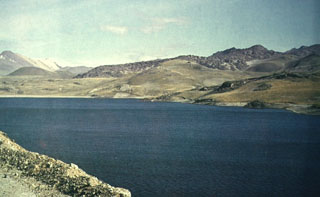Report on Laguna del Maule (Chile) — 23 September-29 September 2020
Smithsonian Institution / US Geological Survey
Weekly Volcanic Activity Report, 23 September-29 September 2020
Managing Editor: Sally Sennert.
Please cite this report as:
Global Volcanism Program, 2020. Report on Laguna del Maule (Chile) (Sennert, S, ed.). Weekly Volcanic Activity Report, 23 September-29 September 2020. Smithsonian Institution and US Geological Survey.
Laguna del Maule
Chile
36.058°S, 70.492°W; summit elev. 2162 m
All times are local (unless otherwise noted)
SERNAGEOMIN reported that during 1-15 September inflation continued to be detected at the Laguna del Maule Volcanic Complex, although at a lower rate of 0.7 cm per month which is below the 2 cm per month average for this year. Seismicity in the S sector was low in both number and magnitude of events. The Alert Level remained at Yellow, the second lowest color on a four-color scale, as activity remained above baselines. ONEMI recommended restricted access within a radius of 2 km from the emission center.
Geological Summary. The Laguna del Maule volcanic complex includes a 15 x 25 km caldera with a cluster of small stratovolcanoes, lava domes, and pyroclastic cones of Pleistocene-to-Holocene age. The caldera lies mostly on the Chilean side of the border, but partially extends into Argentina. Fourteen Pleistocene basaltic lava flows were erupted down the upper part of the Maule river valley. A cluster of Pleistocene cinder cones was constructed on the NW side of Maule lake in the northern part of the caldera. The latest activity produced an explosion crater on the E side of the lake and a series of Holocene rhyolitic lava domes and blocky lava flows that surround it.
Sources: Servicio Nacional de Geología y Minería (SERNAGEOMIN), Oficina Nacional de Emergencia-Ministerio del Interior (ONEMI)

